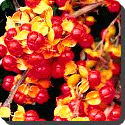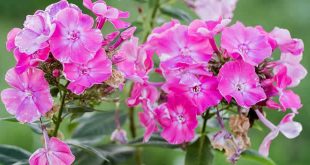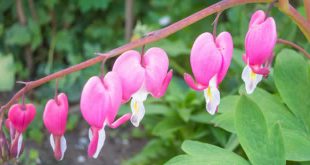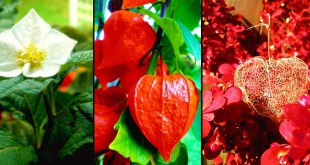 Bittersweet — Bittersweet is a semi-woody herbaceous perennial vine, which scrambles over other plants, capable of reaching a height of 4 m where suitable support is available, but more often 1-2 m high. The leaves are 4-12 cm long, roughly arrowhead-shaped, and often lobed at the base. The flowers are in loose clusters of 3-20, (1-1.5 cm) across, star-shaped, with five purple petals and yellow stamens and style pointing forward. The fruit is an ovoid red berry about 1 cm long, soft and juicy, poisonous to humans and livestock but edible for birds, which disperse the seeds widely. As with most Solanum species, the foliage is also poisonous to humans.
Bittersweet — Bittersweet is a semi-woody herbaceous perennial vine, which scrambles over other plants, capable of reaching a height of 4 m where suitable support is available, but more often 1-2 m high. The leaves are 4-12 cm long, roughly arrowhead-shaped, and often lobed at the base. The flowers are in loose clusters of 3-20, (1-1.5 cm) across, star-shaped, with five purple petals and yellow stamens and style pointing forward. The fruit is an ovoid red berry about 1 cm long, soft and juicy, poisonous to humans and livestock but edible for birds, which disperse the seeds widely. As with most Solanum species, the foliage is also poisonous to humans.
Bittersweet is used in homeopathy and herbalism. Its main usage is for conditions that have an impact on the skin, mucous membrane and the membrane (synovial membrane) around the joints. Bittersweet is considered by some to be a herbal remedy for treating herpes and allergies.
Other common names for Solanum dulcamara include trailing nightshade, bittersweet, trailing bittersweet, climbing nightshade, blue bindweed, bitter nightshade, fellenwort, dogwood, woody nightshade, poisonflower, poisonberry, snakeberry, and scarlet berry.
The name bittersweet is also used in some areas for some species in the genus Celastrus (elsewhere referred to as the staff vines, family Celastraceae), e.g. american bittersweet (Celastrus scandens) and oriental bittersweet (Celastrus orbiculatus).
 Kids Portal For Parents India Kids Network
Kids Portal For Parents India Kids Network




